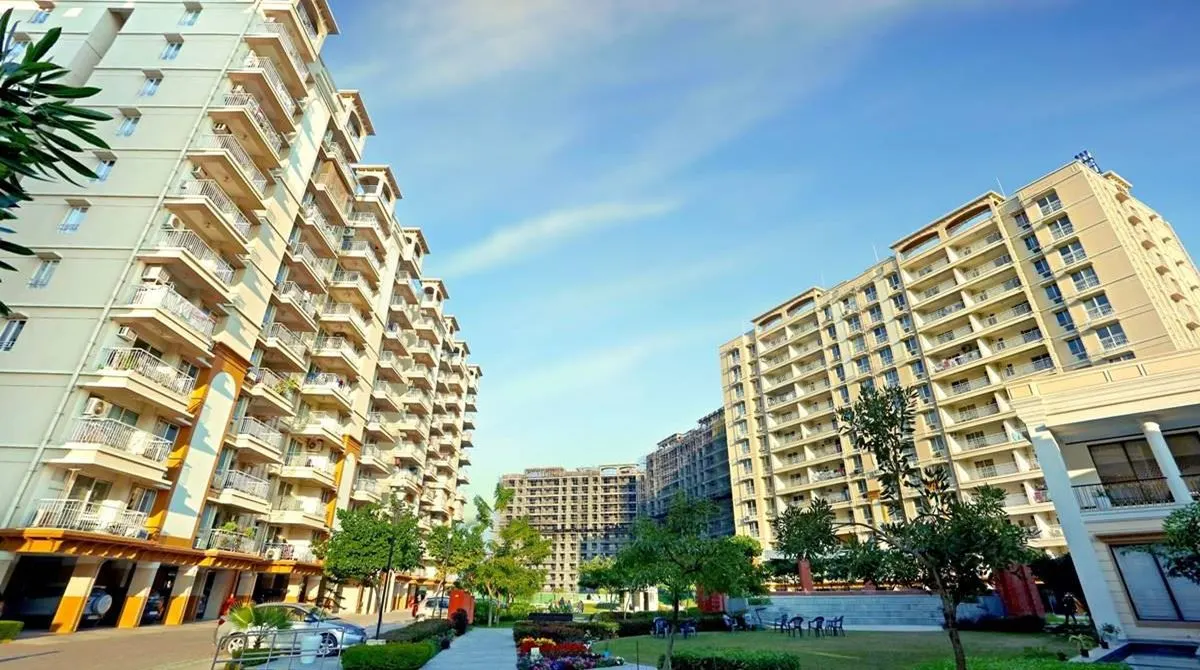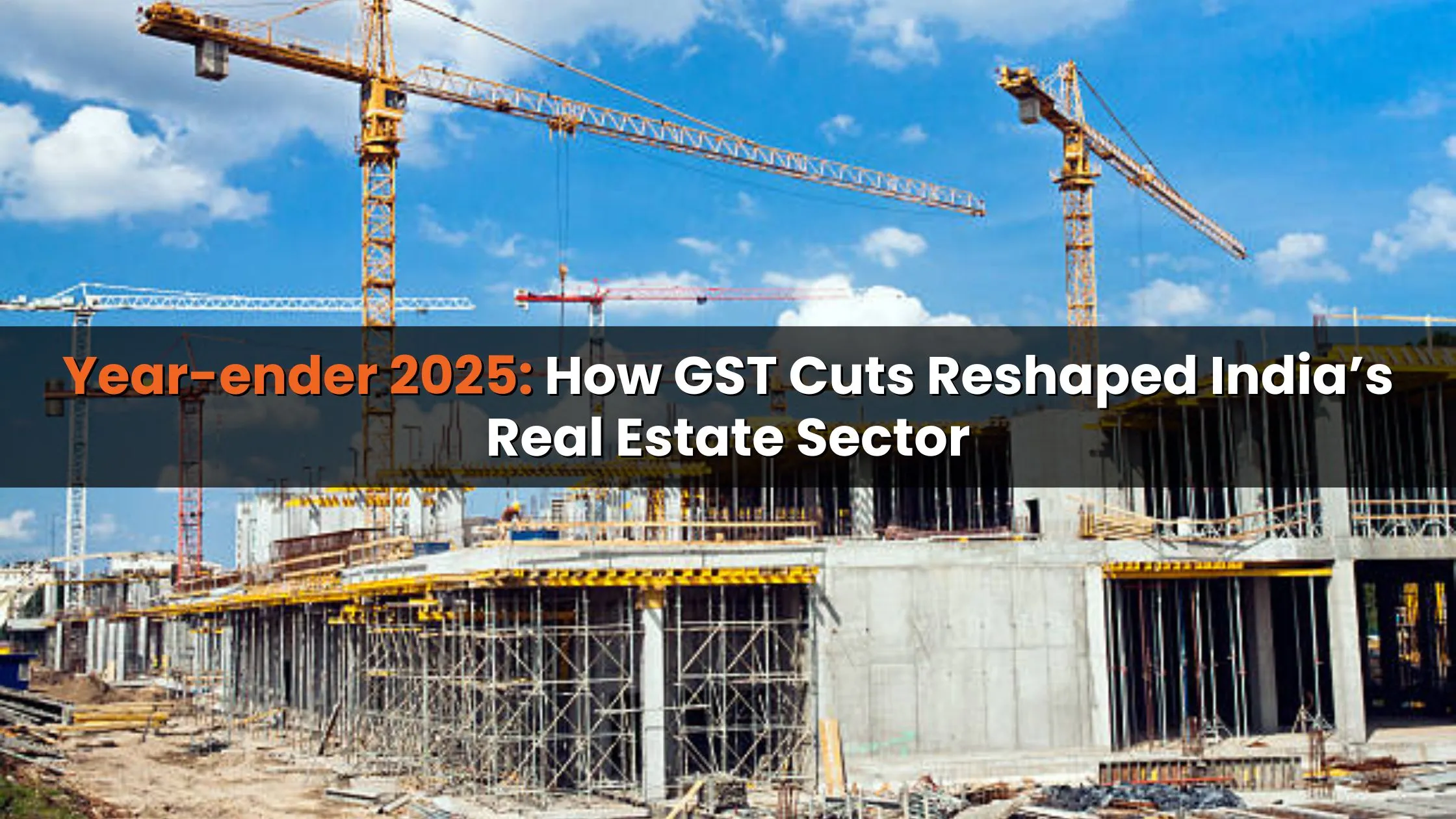Table of Content
The government’s recent decision to introduce GST 2.0 has set the stage for significant changes in the real estate sector. By reducing tax rates on key construction materials, the reform is expected to lower development costs for builders and, in turn, provide some relief to buyers. While the benefits may not be immediate, experts believe that the positive impact will be felt most strongly in affordable housing in peripheral areas, where land is relatively cheaper and construction costs form a larger portion of the overall pricing.
GST 2.0: A Breakthrough for Real Estate
The GST Council’s decision to slash tax rates on core construction inputs marks a major shift for the housing sector. Under GST 2.0:
- Cement and ready-mix concrete now attract 18% GST, down from 28%.
- Bricks, tiles, and sand are taxed at 5%, down from 18%.
- Paints and varnishes have dropped to 18%, from 28%.
For developers, these reductions translate into lower raw material costs. Since affordable projects are highly dependent on construction expenditure, the price relief here is more direct compared to luxury housing, where land costs and premiums dominate. This makes affordable housing in peripheral areas a clear beneficiary of GST 2.0.
Also Read: Why Renting in a Metro and Buying in a Tier-2 City Is a Smarter Retirement Plan
Developer’s Perspective on GST Benefits
Industry leaders have welcomed the reform. Niranjan Hiranandani, Chairman of NAREDCO and CMD of Hiranandani Communities, noted that most construction-related inputs previously carried a steep 28% GST rate, which has now come down substantially. According to him, this will reduce the financial burden on developers and positively influence affordable housing.
However, experts also caution that buyers will need to wait before seeing real price changes. Developers are likely to pass on the GST savings to homebuyers within three to six months, once supply chains stabilize and ancillary industries like steel, logistics, and cement begin reflecting the cost advantages. This means the benefits of GST 2.0 will gradually filter into housing prices over the medium term.
Why Peripheral Areas Gain More
While GST rate cuts are expected to impact the entire housing sector, the benefits will be uneven. Developers emphasize that affordable housing in peripheral areas stands to gain the most.
Here’s why:
- Lower land costs: In the outskirts of cities, land costs are far lower than in prime urban centers. This makes construction costs a larger share of total project costs. Hence, GST cuts on construction inputs provide more tangible benefits in these regions.
- Target markets: Buyers in peripheral areas are typically middle-class households or first-time homebuyers, for whom even modest price reductions improve affordability significantly.
- Examples: Locations such as Dronagiri, Uran, Vasai, Virar, and outer pockets of Pune are likely to see stronger demand as developers pass on GST-related savings.
In contrast, central areas of metro cities may not see a similar impact, since land value dominates housing prices and outweighs construction-related cost savings.
Affordable Housing Market Trends in Tier-2 Cities
The demand dynamics for affordable housing in India are shifting. According to PropEquity, sales in India’s top 15 Tier-2 cities, which are largely considered affordable housing markets, fell by 8% in Q1 2025, dropping to 43,781 units from 47,378 a year earlier.
Yet, interestingly, the total sales value rose by 6%, from ₹38,102 crore to ₹40,443 crore. This indicates that while fewer units were sold, prices remained resilient, signaling healthy demand.
Some Tier-2 cities are also showing impressive growth. For instance:
- Lucknow recorded a 25% increase in housing sales.
- Coimbatore saw growth of 21%.
- Gandhinagar and Mohali posted 18% and 2% growth, respectively.
This data reflects that affordable housing in peripheral areas and Tier-2 cities continues to attract buyers, particularly those seeking long-term investments or retirement homes.
National Housing Market Context
On a national scale, housing sales in India’s top nine cities are expected to fall by 4% in Q3 2025, with unit sales just above the 1 lakh mark. New launches are also projected to remain nearly flat at 92,229 units, representing a 10% drop on a quarter-on-quarter basis.
This slowdown in major metros makes GST 2.0 even more significant. By lowering costs, the reform could encourage developers to focus on launching new affordable housing in peripheral areas, where demand remains resilient and buyers are more price-sensitive.
Also Read: Bangalore, NCR, and Other Key Cities Likely to See Housing Sales Growth of 4%–25% in Q2 2025
Expert Insights and Predictions
Analysts believe the real test of GST 2.0 will be its execution. Developers are optimistic, but the timing of cost pass-through depends on how quickly material suppliers adjust their prices. Most agree that the visible impact for homebuyers will emerge within the next three to six months.
Karan Singh Sodi, Senior Managing Director (Mumbai MMR & Gujarat) at JLL, noted that the benefits will likely be passed on in markets where land prices are modest, particularly on the city fringes. This could revive affordable housing demand in locations around Mumbai and Pune, which have seen slower absorption rates in recent quarters.
Long term, experts believe the reform will provide an added boost to the government’s affordable housing agenda by making projects more viable for developers and more accessible for buyers.
Conclusion
The government’s decision to reduce GST on core construction materials is a timely intervention for the real estate market. While the benefits will take a few months to be fully realized, the impact is expected to be most visible in affordable housing in peripheral areas, where lower land costs allow construction savings to directly influence prices.
With Tier-2 cities already showing signs of resilient demand and peripheral regions becoming more attractive for middle-class buyers, GST 2.0 could be the much-needed push to revive affordable housing sales. For aspiring homeowners, this policy shift not only improves affordability but also strengthens the case for considering suburban and Tier-2 locations as smart long-term investments.







Ans 1. GST 2.0 refers to the recent revision of Goods and Services Tax rates on construction materials. By lowering GST on key inputs such as cement, bricks, tiles, and paints, the reform reduces construction costs for developers. This is expected to positively influence housing prices, especially for affordable projects in peripheral areas.
Ans 2. Cement and ready-mix concrete now attract 18% GST instead of 28%, bricks, tiles, and sand are taxed at 5% instead of 18%, and paints and varnishes have dropped from 28% to 18%. These changes significantly lower raw material expenses for developers.
Ans 3. Affordable housing projects in peripheral areas benefit the most. Since land costs in these regions are relatively low, construction expenses form a larger portion of total project costs, making GST savings more impactful for both developers and buyers.
Ans 4. The cost reductions will likely reflect in property prices within three to six months, depending on how quickly suppliers adjust their prices and developers pass on the savings to buyers.
Ans 5. Peripheral regions around major cities, such as Dronagiri, Uran, Vasai, Virar, and outer pockets of Pune, are expected to see increased buyer interest as developers incorporate GST savings into housing prices.
Ans 6. Luxury housing may see minimal price benefits from GST reductions because land costs and premium charges dominate overall pricing. Affordable housing, where construction costs form a higher proportion, will experience more tangible relief.
Ans 7. Despite a slight drop in unit sales in Q1 2025, Tier-2 cities are showing resilience in total sales value. Cities like Lucknow, Coimbatore, Gandhinagar, and Mohali have recorded growth in housing sales, indicating sustained demand in affordable housing markets.
Ans 8. Yes, lower construction costs make affordable housing projects more financially viable. Developers are likely to focus on launching new projects in peripheral and Tier-2 areas where demand is strong and land costs are moderate.
Ans 9. By making construction more cost-effective, GST 2.0 helps developers deliver affordable housing at lower prices, improving accessibility for middle-class buyers and contributing to broader housing affordability goals.
Ans 10. With GST reductions, rising demand in Tier-2 cities, and ongoing urban expansion, affordable housing in peripheral areas is expected to see steady growth, offering both livable homes and smart long-term investment opportunities.